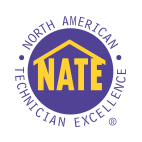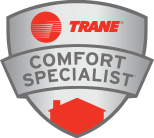When deciding on any major purchase, a critical step is to weigh the pros and cons. This helps you to decide on the best option and reach the best decision for your needs and preferences.
Installing a new heating system in your Salt Lake City home is a perfect example of a situation in which you would need to weigh pros and cons. There are a lot of options, and not all of them are right for all people. Take heat pumps, for example. They are great devices and serve many people extremely well as home heating solutions, but they are not without their drawbacks. Below are some of the pros and cons of heat pumps to help you decide whether a heat pumps if the way to go for you.
Pros:
- Inclusive – A heat pump not only heats your home in the winter but also cools it in the summer, thanks to a reversing valve that changes the flow of the refrigerant. Having one appliance for both heating and cooling can be very convenient.
- Energy efficient – Heat pumps are extraordinarily efficient when it comes to energy use. Because they simply move and distribute heat, rather than producing any on their own, they use minimal electricity.
- Simple – Operating on the same basic principles as your refrigerator or an air conditioner, heat pumps are relatively simple. More importantly, they simplify your life by putting your heating and cooling solutions in one package and running on electricity, so you don’t need any other fuels on hand.
- Inexpensive to operate – In addition to being energy efficient – which lowers your monthly energy bills – many heat pumps are eligible for federal tax credit. You can save a bundle by using a heat pump.
Cons:
- May need supplementing in cold climates – In climates where winter temperatures stay below 30 degrees Fahrenheit for a while at a stretch, a heat pump will have trouble keeping up and need to be supplemented.
- Don’t work in power outage – Obviously, because they are powered by electricity, a heat pump won’t work in a power outage, unlike some other heating solutions that do not require electricity.
Although the pros clearly outweigh the cons here, the cons are important as well. Carefully consider all these factors and more while deciding whether a heat pump is the solution for your Salt Lake City home. Call Design Comfort today to learn more about installing a new heating system in your home!


